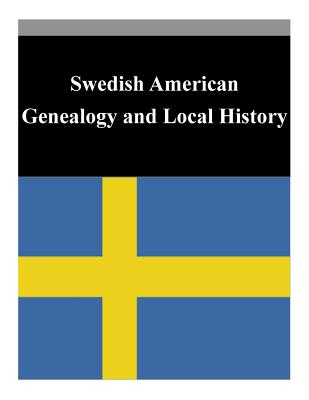Swedish American Genealogy and Local History

Swedish American Genealogy and Local History
Swedish American studies, including local history and genealogy, are among the best documented immigrant studies in the United States. This is the result of the Swedish genius for documenting almost every aspect of life from birth to death. They have, in fact, created and retained documents that Americans would never think of looking for, such as certificates of change of employment, of change of address, military records relating whether a soldier's horse was properly equipped, and more common events such as marriage, emigration, and death.When immigrants arrived in the United States and found that they were not bound to the single state religion into which they had been born, the Swedish church split into many denominations that emphasized one or another aspect of religion and culture. Some required children to study the mother tongue in Saturday classes, others did not. Some, more liberal than European Swedish Lutheranism, permitted freedom of religion in the new country and even allowed sects to flourish that had been banned in Sweden. Amidst all these schisms the Augustana Synod in Rock Island, Illinois, remained the largest and most influential, the church that produced the most books and founded Augustana College in Rock Island, Illinois. In this city, and associated with the college, the Swenson Center is a repository of Swedish culture in America and a source of documents for genealogists (see more about this below).Most immigrants adjusted well and became Americans proud of their Swedish descent. Many have contributed significantly to the betterment of the country. Two phenomena, however, differentiate Swedish-American studies from those of other immigrant groups.First, there arose a "Swedish America," which was not entirely of either country. It was characterized by societies designed to keep immigrants together, and sometimes to isolate them from American influence. Swedish-language magazines and books were published, and immigrants were encouraged to live in communities of their own kind, partly to form mutual-aid societies, partly to prevent assimilation. Thus arose Swedish cities such as Lindsborg in Kansas (where the local college still presents a yearly musical performance of great beauty), Bishops Hill in Illinois, and Chisago Lake in Minnesota. In the great Chicago fire of 1871, the southern part of the city, dubbed "Swedetown" by other Chicagoans, was the first to burn, and approximately 200,000 Swedish immigrants were rendered home
PRP: 115.86 Lei
Acesta este Pretul Recomandat de Producator. Pretul de vanzare al produsului este afisat mai jos.
104.27Lei
104.27Lei
115.86 LeiLivrare in 2-4 saptamani
Descrierea produsului
Swedish American studies, including local history and genealogy, are among the best documented immigrant studies in the United States. This is the result of the Swedish genius for documenting almost every aspect of life from birth to death. They have, in fact, created and retained documents that Americans would never think of looking for, such as certificates of change of employment, of change of address, military records relating whether a soldier's horse was properly equipped, and more common events such as marriage, emigration, and death.When immigrants arrived in the United States and found that they were not bound to the single state religion into which they had been born, the Swedish church split into many denominations that emphasized one or another aspect of religion and culture. Some required children to study the mother tongue in Saturday classes, others did not. Some, more liberal than European Swedish Lutheranism, permitted freedom of religion in the new country and even allowed sects to flourish that had been banned in Sweden. Amidst all these schisms the Augustana Synod in Rock Island, Illinois, remained the largest and most influential, the church that produced the most books and founded Augustana College in Rock Island, Illinois. In this city, and associated with the college, the Swenson Center is a repository of Swedish culture in America and a source of documents for genealogists (see more about this below).Most immigrants adjusted well and became Americans proud of their Swedish descent. Many have contributed significantly to the betterment of the country. Two phenomena, however, differentiate Swedish-American studies from those of other immigrant groups.First, there arose a "Swedish America," which was not entirely of either country. It was characterized by societies designed to keep immigrants together, and sometimes to isolate them from American influence. Swedish-language magazines and books were published, and immigrants were encouraged to live in communities of their own kind, partly to form mutual-aid societies, partly to prevent assimilation. Thus arose Swedish cities such as Lindsborg in Kansas (where the local college still presents a yearly musical performance of great beauty), Bishops Hill in Illinois, and Chisago Lake in Minnesota. In the great Chicago fire of 1871, the southern part of the city, dubbed "Swedetown" by other Chicagoans, was the first to burn, and approximately 200,000 Swedish immigrants were rendered home
Detaliile produsului









